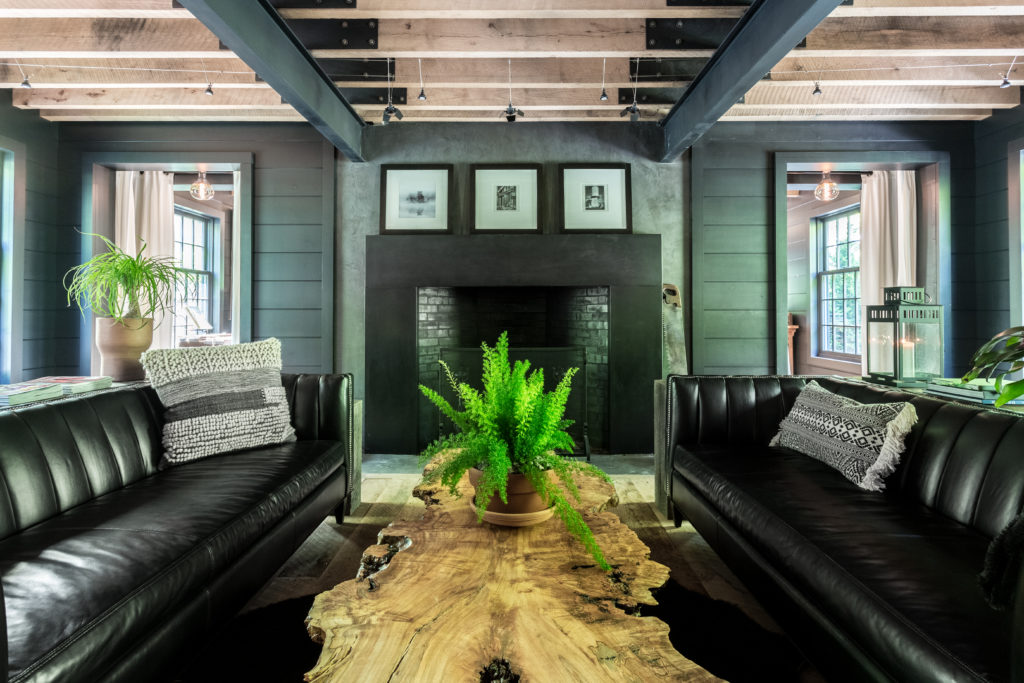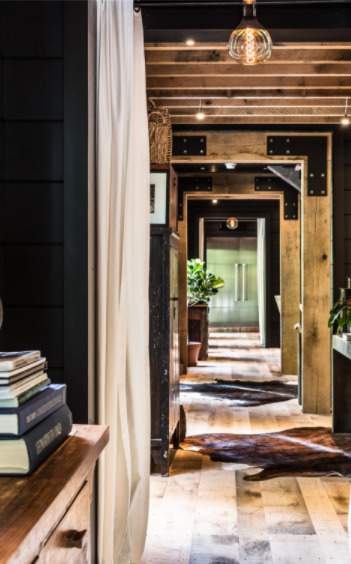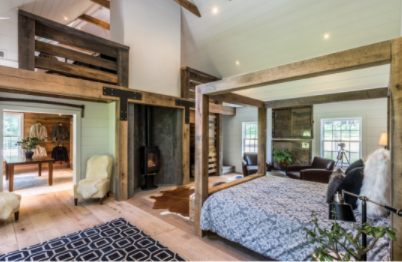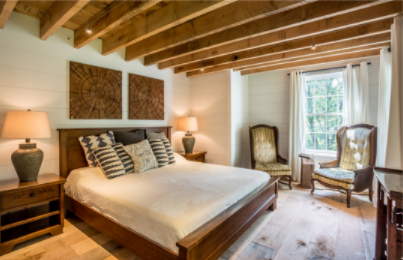Category: Resources
Why Design Build?
What is Design Build?
Design-Build is a system of project delivery, meaning a comprehensive process including planning, design, and construction required to execute and complete a building project.
Over the past few years, use of design-build has greatly accelerated in the United States, making design build one of the most significant trends in design and construction today. Design-Build is where the owner enters into a single contract with the design-builder (one entity) to provide both design and construction services. With one design-build entity, the roles of designer and builder are integrated and drives one unified flow of work from initial concept through completion.
Benefits of Design Build
The advantages of the single contract in the design-build model are many. An integrated design build team works cohesively to complete a project faster, more cost effectively, and execute the intended design more successfully. Disputes are rare in well organized, performance-based design-build projects, because the sole-source responsibility of a single contract for both design and construction clearly places the accountability for coordinating all project elements in the hands of the design-build team.
A single contract for both design and construction consolidate the accountability and responsibility for the completeness, accuracy and integration of the design and construction processes to the design-build entity.
Design-Build is also a mindset. As much as design-build is defined by a sole-source contract for design and construction services, design-build is also defined by the attitude of everyone involved in the project. In successful design-build projects, everyone makes the mental shift to think and act as a single entity. Design-build is intended to be a highly collaborative, fully integrated process that is built on trust, mutual respect, teamwork, innovation and creative problem solving. Owners find that when design-build is done right, their level of engagement with the entire team is more meaningful than is experienced with other delivery methods and the owners’ stress level is lower. Across the country and around the world, design-build successfully delivers both horizontal and vertical construction projects with superior results, no matter what the project type.
Traditional (Design-Bid-Build) System & Disadvantages
By contrast, in all other systems of project delivery, the owner must manage two or more separate contracts, one for design of the home, one for land preparation and development, and one for construction. In this system, the owner would need to engage an architect to design the home while separately engaging a surveying company to design the grading and land development plan. Then, the owner would later engage a construction company (General Contractor) to apply for and obtain necessary grading and building permits. When these three critical activities are performed by separate entities with no one accountable for integrating all aspects together, the result can be catastrophic even before the construction commences (e.g. house footprint is too large for the allowable building envelop, suboptimal orientation of the home, insufficient storm water management plan based on total impervious surface, awkward placement of multiple buildings on the property, project delays due to lack of coordination and proper project sequencing). And, the owner becomes the middleperson who has to engage in potential disputes between the designers and the contractor.
The frequency and intensity of those disputes are often exacerbated by the contractual nature of traditional design-bid-build project delivery. Architects and engineers design and prepare plans and specifications to the best of their abilities, but do not warrant those documents to be perfect and free of human error. The designer then presents the completed plans and specifications to the owner, who in turn, uses those documents to request bids from multiple contractors. It is not uncommon under traditional forms of project delivery that the information provided is not sufficient to bid and build the project. And, the owner is then caught in the middle of a liability gap. When this happens, disputes, claims and change orders are often the result, with the owner caught in the middle of the finger-pointing between the designer and the contractor who have differing contractual obligations. With multiple contracts and lack of overall project accountability, the designers and contractor can easily blame one another for cost overruns and other problems. Therefore, design-bid-build system requires the owner to work harder, hold more responsibility, and be exposed to greater risks.
Adapted from Design-Build Primer by Design-Build Institute of America, October 2014.
A House Built for Entertaining
At Alpha Genesis Design Build, we are more than a team of architects, designers, and builders — we are a lifestyle company. We design and build homes that are an extension of your unique lifestyle. Entertaining guests is an important function for any home. For some, it’s the hallmark of what defines each room and space.
A home built for hosting exudes a certain feel and sense of comfortability. Open spaces, areas for sitting and standing, appropriate thoughtful lighting, and other elements all work together to make a home a welcoming place for friends and family. Our design team of architects and builders collaborate with homeowners throughout the planning and building processes, considering how they will use their home for their family and entertaining.
To understand what makes a home ideal for hosting, we will showcase several of our recent projects designed with entertainment in mind. With careful consideration of the architectural and interior design elements discussed below, we can create a luxury home ideal for entertainment.
Capture a Sense of Comfort Through Scale, Size, and Space
If you love welcoming guests into your home, it should have unique spaces that look good, feel good, and function well for entertaining. Several important elements must come together to make guests feel relaxed and comfortable, including scale, size, use of space, and traffic flow.
One of the first steps we take when designing a home is understanding a homeowner’s lifestyle. Some people enjoy entertaining guests at lavish parties in large spaces, while others prefer a cozy space that lends itself to intimacy and comfort. Rooms should feature the best design elements for entertaining and transform to accommodate the event’s needs. Learning your entertaining preferences allows us to tie in your personal connection with the overall design.
Consider Scale and Size in Every Design Element
Scale is a key element when designing a home for living and entertainment and is a far more important consideration than size alone. Rooms, both large and small, can feel welcoming and intimate if they are properly scaled with their furnishings and decorations that are properly sized and placed. It’s about bringing together the right size, scale, and proportions of all elements in a room.
One example is rooms with ultra-lofted ceilings. A voluminous space can pose a challenge as it can make people and furniture feel lost if elements in the room are not scaled properly. Décor should extend beyond the first 6 feet of height to encompass the scale of the room. When scaled properly with suitable furnishings, lighting, architectural details, and thoughtful decorations, even large rooms can feel inviting and engaging for homeowners and guests alike.
Careful Use of Space Allows Rooms to Feel Like They Were Built for the Occasion
When we know a home’s purpose is for entertaining, flexibility becomes paramount. Whether you wish to accommodate a large party, an intimate gathering, or two people relaxing at home, rooms should have the flexibility for multiple uses.
Barenhaus has a bold, Germanic architectural design with entertaining at its heart. The kitchen is the perfect example of a space designed for hosting. As the heart of the home, guests tend to congregate in the kitchen. The island, walkways, and appliances all have just the right amount of space to be functional yet accommodate many people. The Barenhaus kitchen can also serve the needs of chefs or catering staff, with plenty of room to establish workstations and move about freely. While offering a lavish living and entertaining area, this home can be quite comfortable for the family’s everyday use.
Analyze and Incorporate Traffic Flow into the Floorplan
A house does not need to be large to serve as an excellent entertainment space. A well-designed home considers how good traffic flow can be achieved, even with small square footage. Careful consideration must be given to furniture size and placement, spacing between objects, and how guests are meant to move around and between rooms. No matter the setting, there must be enough space for people to walk around, sit down, and get up without bumping into others or squeezing through spaces.
The Lodge is a new construction residential home tucked away in the woods of Bucks County, Pennsylvania. The architect and design team took full advantage of the traditional Quaker meeting house’s long horizontal design to create ample traffic flow. A perimeter hallway directs foot traffic to the exterior walls of each space room creating intimate spaces within the centers of each space to facilitate entertainment. Guests can migrate freely from room to room without disrupting other guests, creating a more intimate feel.
Use Outdoor Space as an Extension of Indoor Living
Building a home that is suitable for dinner parties can be enhanced when making use of both indoor and outdoor environments. Whether in the city — where outdoor space is at a premium — or in the middle of a 50-acre estate, marrying your indoor and outdoor spaces maximizes your total entertaining area. A courtyard, deck, or patio encourages outdoor entertaining and creates a relaxed environment. If you have French doors or windows in your kitchen and living spaces, these can remain open to connect the two areas.
The Lodge Terrace is designed to seamlessly blur the transition between indoor and outdoor living and entertaining. An outdoor courtyard is bordered on three sides by the home, guest suites, and a 3-foot wooden fence to create a spacious yet intimate area. Ample outdoor lighting illuminates the area with a gentle glow to evoke evenings of laughter and conversation.
Create a Unique Mood Through Light and Sound
Designing a home that’s entertaining for guests is more than physical layout and furnishings. The mood is something that lingers in individuals’ memories long after the event ends. Appropriate lighting and sound can often be overlooked design elements, but can set an ideal mood for any occasion.
Highlight the Mood Through Lighting
Lighting is one of the key features of home design as it can dramatically change the feel of a space. Lighting impacts a room’s perceived size and functionality, and it can change the mood, especially when you’re entertaining. Some lively events require bright lights to see and move with ease. Other gatherings are more intimate and work best with gentle dimmed lighting.
Choosing the right accent lights is critical. Although they provide added illumination, these elements are decorative in nature and can be used to make a style statement or to emphasize architectural features in the space. A variety of light fixtures can be used to great effect, including cove lighting, pendants, scones, and chandeliers. The style of these lights should be thoughtfully selected in conjunction with the overall style of the home, the room size and scale. For example, ultra-modern oversized geometric-shaped pendants in this Vermont ski chalet were chosen as an important aesthetic and design feature in the decorative theme and create a dramatic effect.
Incorporate Sound Design Into the Architectural Process
Most people tend to overlook the importance of internal acoustics in constructing a perfect entertaining environment. Yet, great sound and acoustics make your home an inviting place to entertain. Think of a bustling restaurant where you have to speak louder to keep up with the noise level or echo in the space. This is an example of bad acoustics. Hard surfaces such as glass, mirrors, and tile increase echoes in large rooms and can create more resonance. Decorating rooms with a mix of material and soft surfaces, such as rugs, decorative pillows, and tapestries helps absorb sound and balance the room’s acoustic properties.
Music is another excellent way to enhance an event. A built-in sound system allows hosts to set the mood for each unique gathering with the right tone and atmosphere. Music can also link or separate entertaining areas. For example, the same music playing both indoors and outdoors can create continuity between the two spaces. Different music in each area, however, can signal a transition of space and mood and provide variety and set the mood and energy as guests transition from a relaxed interior room to a more lively outdoor party space.
We Can Help You Design and Build a Home Made for Entertaining
The architects and design-build team at Alpha Genesis can design and build you a home that’s comfortable for your family and thoughtful for entertaining. While we’re based in New Hope, PA our full-service firm develops and executes unique concepts across the country. Contact us to discuss your project needs.
A Look into The Lodge Project
Perched on a ledge overlooking the Paunnacussing Creek in Solebury Township, PA, The Lodge is a new construction residential project crafted to take full advantage of the site’s spectacular topography, wooded privacy and natural views. With a blend of old and new worlds, The Lodge was designed to integrate traditional exterior features with uncompromisingly modern interiors. Completed in 2016, the work consists of a 5,000SF four-bedroom main residence and a 2,100SF garage and loft space. These two buildings are connected by a covered walkway and accentuated with intimate, tree-lined courtyards.

A Modern Home with Traditional Framework
Given its location in a historic area of Bucks County close to the Delaware River, the owners expressed a desire to respect the surrounding vernacular architecture. Considering this, a key challenge confronting the design team was the desire to create a modern, dynamic, and functional space within a traditional framework.
At the beginning of the design process there was a commitment to rigorously adhere to a traditional and authentic material palette for both exterior cladding and interior finishes. The exterior form borrows elements of a traditional Quaker meeting house, including its simple gable form, wood lap siding, regular window spacing arrangement, and cedar shake roofing.

In contrast to this, the design team juxtaposed a modern plan arrangement in which circulation through the enfilade of rooms is located along the perimeters, resulting in uncluttered exterior walls and more focused, intimate spaces within the centers of each room.

Interiors are finished with a substantial use of milled and dried oak, such as shiplap cladded walls and ceilings, clear finished plank flooring, and exposed hand-cut joists. The traditional expression of functional brackets and hardware is reinterpreted by the designers on a larger scale with exposed blackened steel beams and angle connection plates.


Skraffino micro-cement toppings are utilized to provide textured, fire-resistant surfaces at the various fireplaces throughout the house. The interior design, including all furnishings, lighting, textiles and artwork, was carefully selected by the team to provide a complete, comprehensive design.

To complement the interior spaces, expansive outdoor living and entertainment spaces are defined by the placement of trees, terraces, wood fencing and natural stone retaining walls, resulting in a distinctive and timeless design.





